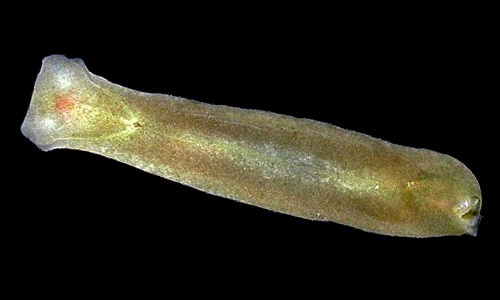_______________
Additional Photos

2nd view

shell

|
Phanerophthalmus cf. paulayi
Austin, Gosliner & Malaquias, 2018

Maximum size: 30 mm.
Identification:
This
animal has a translucent shell with a greatly expanded aperture
and an outer lip that projects well above the apex. The shell is
external but only about 1/8 the length of the animal and is almost
completely covered by the parapodia. The animal is cream densely
flecked with olive green.
Natural history:
Phanerophthalmus
cf. paulayi is a rare species in protected back reef habitats at
< 1 m (< 3 ft) with only one animal seen. However, we've found a
number of shells
in sand samples from Halimeda
kanaloana beds and Kay, 1979 states that it has been dredged
from 50 m (164 ft) suggesting that it is more common in deeper water.
Our one live animal showed a nocturnal activity pattern while held. It
laid a lozenge-shaped, white egg mass with densely packed eggs that
measured 9 by 6 mm. The mass was attached by an adhesive surface and
hatched in four days in the laboratory.
Distribution:
Maui, Oahu, French Frigate Shoals and Midway: widely distributed in the
Indo-Pacific.
Taxonomic notes:
The
drawing of this animal in Kay, 1979 is mislabeled as Phanerophthalmus cylindricus (now changed to Phanerophthalmus perpallidus). Also, the shell listed as this species in Severns, 2011 probably falls within the range of variation for P. perpallidus, instead. Manuel Malaquias said this species "...is most likely our new species named after Gustav Phanerophthalmus paulayi..." (pers. com., 2018) but that it will require new material for confirmation with DNA.
Photo: CP: 30
mm: Hekili Point, Maui; Oct. 26, 1999.
Observations and comments:
Note
1: ( )
|
|



